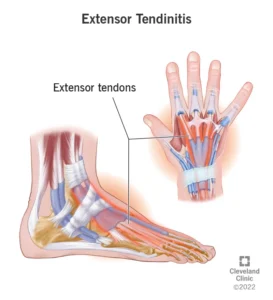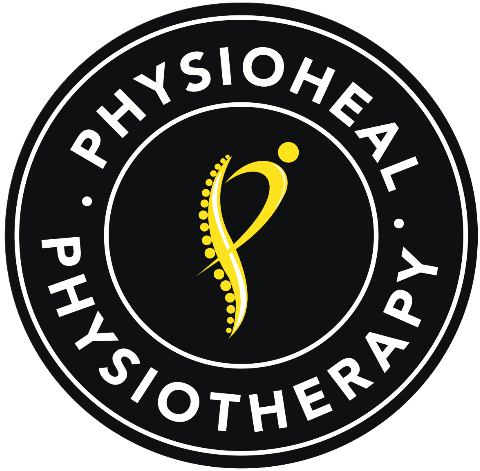We Are Open For Tendinitis Treatment in Gurgaon!
Fill the form and let us call you back.
[gravityform id="3" title="false" description="false"]
Comprehensive Tendinitis Treatment at Physioheal Physiotherapy
Tendinitis Management – Welcome to Physioheal Physiotherapy
Welcome to Physioheal Physiotherapy, your trusted partner in Tendinitis Management. Tendinitis, often characterized by painful inflammation of the tendons, can hinder your daily activities and quality of life.
Empowering You to Overcome Tendinitis
Tendinitis, also known as tendonitis, is a condition marked by the inflammation of tendons due to overuse or injury during physical activities. At Physioheal Physiotherapy in Gurgaon, we offer specialized solutions to alleviate the discomfort and restrictions caused by tendinitis, promoting your well-being and restoring your mobility.
Unveiling the Dynamics of Tendinitis
Tendinitis can manifest in various joints, including the heel, shoulder, and elbow, resulting from the inflammation of tendons, which are strong, cable-like tissues connecting muscles to bones. These essential connectors play a crucial role in joint movement, but excessive strain can lead to inflammation and discomfort.

Understanding Tendinitis Varieties
Tendinitis can affect various tendons in distinct ways:
- Achilles Tendinitis: Impacting the heel’s connection to the calf muscle, this common sports injury can also affect individuals with rheumatoid arthritis, causing discomfort during walking, running, and jumping.
- Supraspinatus Tendinitis: Inflammation of the shoulder’s top tendon can lead to arm movement pain and discomfort while lying on the affected side.
- Elbow Issues: Lateral epicondylitis (tennis elbow) and medial epicondylitis (golfer’s elbow) cause discomfort during wrist movements, requiring tailored management.
- de Quervain’s Stenosing Tenosynovitis: Inflamed sheaths surrounding thumb tendons can restrict thumb movement and cause pain.
- Trigger Finger or Thumb: This condition causes a clicking sensation during finger straightening due to thickened and inflamed palm tendon sheaths.
- Wrist Tendinitis: Repeated wrist movements from typing, writing, or sports can lead to discomfort and require specialized care.
Symptoms of Tendinitis
Although tendinitis symptoms can vary, they usually include:
- pain in the affected tendon
- tenderness and pain when movingTrusted Source the joint
- a catching or grating feeling
- swelling
Causes and risk factors
Both repeated minor injuries and sudden acute injuries can cause tendinitis. Most cases of tendinitis are the result of repeated stress or overuse, which could include:
- making repetitive motions, such as chopping or typing for long periods
- having poor posture
- wearing unsupportive shoes
- excessive exercise
Risk factors
Some people are more likely to get tendinitis than others. Risk factors for tendinitis include:
- Age: Tendons become stiffer with age, making a person more susceptible to injury.
- Profession: If a person’s job involves repetitive movements, they are at a higher risk of overuse injuries.
- Sports: Sports like running, tennis, and golf involve repetitive motions, which can lead to tendinitis.
- Some health conditions: People with gout, kidney diseases, and rheumatoid arthritis are more likely to develop tendinitis.
Diagnosis
A healthcare professional will ask about symptoms and carry out a physical examination. They may gently move the affected tendon. This can identify tenderness an a creaking sound, which happens when the tendon sheath becomes thick and inflamed. For most cases of tendinitis, a doctor will recommend rest, ice, and OTC pain relievers.
Rarely, if symptoms do not improve, a doctor may recommend additional tests. An X-ray can show calcium deposits around the tendon, which may confirm a diagnosis. Other imaging tests such as ultrasound or MRI scans may reveal swelling of the tendon sheath.
Treatment
Treatment for tendinitis aims to relieve pain and reduce inflammation. Rest, heat and ice, and OTC pain medication are common home treatment options. If these do not improve a person’s symptoms, a doctor may recommend further interventions.
- Rest: Tendinitis is an overuse injury. Resting the affected tendon allows the inflammation to reduce. If a sport or specific repetitive motion caused the tendinitis, the person should avoid this activity. A bandage, splint, or brace may help reduce movement.
- Hot and cold therapy: An ice pack can decrease swelling in the affected area. Applying ice for 10–15 minutes once or twice per day can reduce inflammation and pain. A person should always wrap ice in a towel to avoid direct contact with the skin. Some people also find it useful to alternate heat and ice. They can use hot towels or warm compresses, or take a warm bath. Ice is normally best for injuries that occurred within the last 48 hours. After this, heat may be a better option.
- Shock wave therapy or surgery: If tendinitis persists and there are calcium deposits around the tendon, a doctor may suggest extracorporeal shock wave therapy. This involves passing a shock wave through the skin and breaking up the calcium deposits. This can treat tendinitis and improve symptoms.
- Physical Therapy Management: Eccentric exercises have been proposed to promote collagen fiber cross-link formation within the tendon, thereby facilitating tendon remodelling. The basic principles in an eccentric loading regimen are unknown, although it has been speculated that forces generated during eccentric loading are of a greater magnitude than those in concentric exercises. It is possible that eccentric exercises do not just exert a beneficial mechanical effect, but also act on pain mediators, decreasing their presence in tendinopathic tendons. Excellent clinical results have been reported both in athletic and sedentary patients. Although these results were not reproduced by other study groups. In general, the overall trend suggests a positive effect of eccentric exercises, with no reported adverse effects. In one study, the combination of eccentric training and shock wave therapy produced success rates that were higher than those with eccentric loading alone or shock wave therapy alone. There is little consensus regarding which variables may influence the outcome of eccentric training, including whether training should be painful, home- vs clinic-based training, the speed of the exercise, the duration of eccentric training and the method of progression. Three basic principles in an eccentric loading regime have been proposed:
- Length of tendon: if the tendon is pre-stretched, its resting length is increased, and there will be less strain on that tendon during movement.
- Load: by progressively increasing the load exerted on the tendon, there should be a resultant increase in inherent strength of the tendon.
- Speed: by increasing the speed of contraction, a greater force will be developed.
Prevention
Tendinitis is a common condition that can be difficult to prevent. While trying to avoid overuse can reduce a person’s chance of getting tendinitis, this can be challenging if they have an occupation that requires repetitive movement. However, people can lower their chances of getting tendinitis by:
- warming up before exercising
- building up an activity’s intensity gradually
- engaging in sports regularly, rather than only on weekends
- using proper form when exercising
- ensuring shoes and gear fit appropriately
- stopping if a movement causes pain
- strengthening the surrounding muscles, which can reduce the strain on tendons
- avoiding repetitive activities where possible
- taking frequent breaks from repetitive activities
Promoting Your Recovery Journey
With our expert team led by Dr. Divya Gaur, we strive to provide effective tendinitis treatment in Gurgaon. Our personalized care approach, integrated with innovative techniques, aims to restore your comfort and mobility. Our holistic approach addresses various facets of tendinitis:
- Comprehensive Diagnosis: Our experienced healthcare professionals conduct thorough assessments to pinpoint the affected tendon, identify symptoms, and understand your unique condition.
- Personalized Treatment: Tailoring treatments to your needs, we offer rest, ice, and over-the-counter pain relievers, combining these approaches for optimal results.
- Restorative Techniques: Utilizing a range of techniques, including rest, hot and cold therapy, shock wave therapy, and physical therapy management, we aim to alleviate pain and inflammation.
- Eccentric Exercises: Our innovative approach includes eccentric exercises designed to promote tendon remodeling, enhance strength, and foster overall healing.
- Preventive Strategies: Empowering you to take charge of your well-being, we provide guidance on warming up, gradually intensifying activities, maintaining proper form, and more.
Take the First Step Towards Relief
If you’re seeking relief from tendinitis, consult Dr. Divya Gaur at Physioheal Physiotherapy. Our dedicated physiotherapists are equipped to provide a holistic treatment plan, encompassing education, support, and resources to facilitate your journey towards recovery. Schedule an appointment today by calling +91-9999259307, using our online booking system, or requesting a phone consultation. Embark on a path to renewed vitality and freedom from tendinitis with us.
